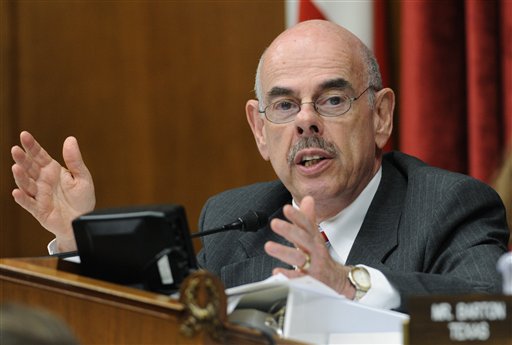Henry Waxman and George Miller are retiring from the House and not running for re-election after 40 years as congressmen from southern and northern California.
Videos By Rare
Also retiring and not running for re-election is Sen. Tom Harkin of Iowa. Sen. Max Baucus of Montana will resign if, as expected, he is confirmed as ambassador to China. Both were first elected to the House in 1974 and were later elected to the Senate.
These four are just about the last members serving in Congress of the 75 Democrats first elected to the House in the Watergate year of 1974.
The only other members of the class of 1974 are Iowa Sen. Charles Grassley, one of only 17 Republican freshmen elected that year, and Congressman Rick Nolan, who retired from the House in 1980 but was elected again in 2012 after 32 years in the private sector.
Aside from these two outliers, the class of 1974 is about to pass into history. What did it accomplish?
First, it changed the way the House of Representatives operates, starting from before its members took the oath of office and continuing to the present day.
Democrats had held majorities in the House for 20 years, but the liberal majority in the caucus was often stymied by the seniority system that allowed conservative Southerners to hold key chairmanships.
Beginning in 1974, the leadership allowed the Democratic caucus to vote up or down on chairmen against whom a certain number of signatures were gathered.
San Francisco’s Phil Burton, who had shrewdly backed many ’74ers, gathered a sufficient number of signatures for every chairman. Three were defeated by the newly enlarged caucus, including one, first elected in 1940, who addressed the freshmen as “boys and girls.”
Election of committee chairmen became routine, and it meant that anyone seeking a chair had better have a voting record in line with the Democrats’ liberal majority. For example, Jamie Whitten of Mississippi, first elected a month before Pearl Harbor, shifted suddenly from right to left.
Republicans did something similar when they won their House majority in 1994. Their 73 freshmen, shrewdly backed and mentored by Newt Gingrich, supported his move to have chairmen chosen by a leadership-dominated steering committee.
The result is that the Democratic Caucus became solidly liberal, and the Republican Conference (the two parties use different names) solidly conservative. The polarized House is in large part the product of the classes of 1974 and 1994.
The change can be justified on neutral principles. Committees more closely resemble the legislature as a whole, which makes legislating more feasible — and party leaders and members accountable to the voters.
The downside, in some critics’ view, is that the election of chairmen also gave would-be chairmen motives to raise money for other members, very often from K Street lobbyists.
Many class of 1974 members proved to be productive legislators. Waxman, who ousted a more senior chairman of a health subcommittee in 1978, sponsored bipartisan laws on generic drugs and orphan drugs (for rare diseases), forced expansion of Medicaid in the Reagan years, shaped the 1990 Clean Air Act and pushed Obamacare and cap-and-trade through the House in 2009-10.
Miller worked with John Boehner and Edward Kennedy on the Education Act of 2001. Harkin helped lead the bipartisan move to double funding for the National Institutes of Health over five years. Baucus led Senate Finance Democrats for 13 years.
The class of 1974 also shifted the House and the congressional Democratic Party from hawkish to dovish. One of its first acts in March 1975 was to block funding for South Vietnam when it was under attack by the North. Saigon fell in April.
In the 1980s, the Democratic House kept pushing back on the Reagan foreign policy. In 2002, Nancy Pelosi, who holds the seat once held by Phil Burton, led most House Democrats to oppose the Iraq war resolution.
Pelosi says she is staying on, even as her ally Waxman and her consigliere, Miller, leave the House. The 201-member caucus she leads has more black and Hispanic members and fewer young doves and reformers than the 291-member caucus Waxman and Miller entered nearly 40 years ago.
Still, the class of 1974 has left a mark on history — though not as much as one Democrat who narrowly lost a House race that year, a 28-year-old Arkansan named Bill Clinton.
© COPYRIGHT 2014 THE WASHINGTON EXAMINER
DISTRIBUTED BY CREATORS.COM

